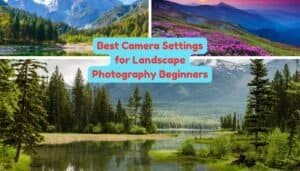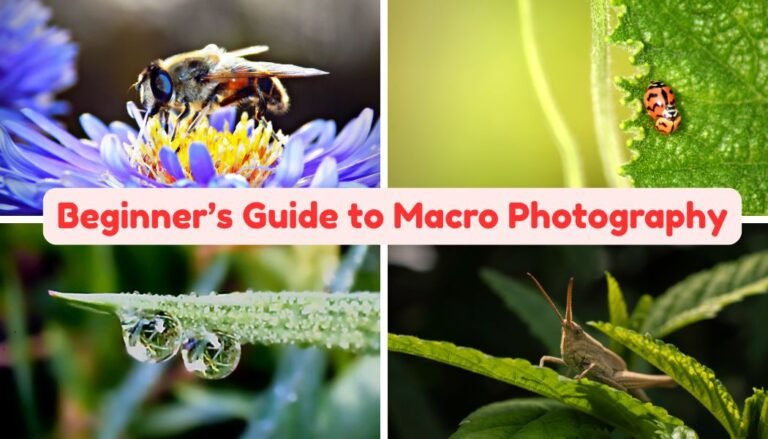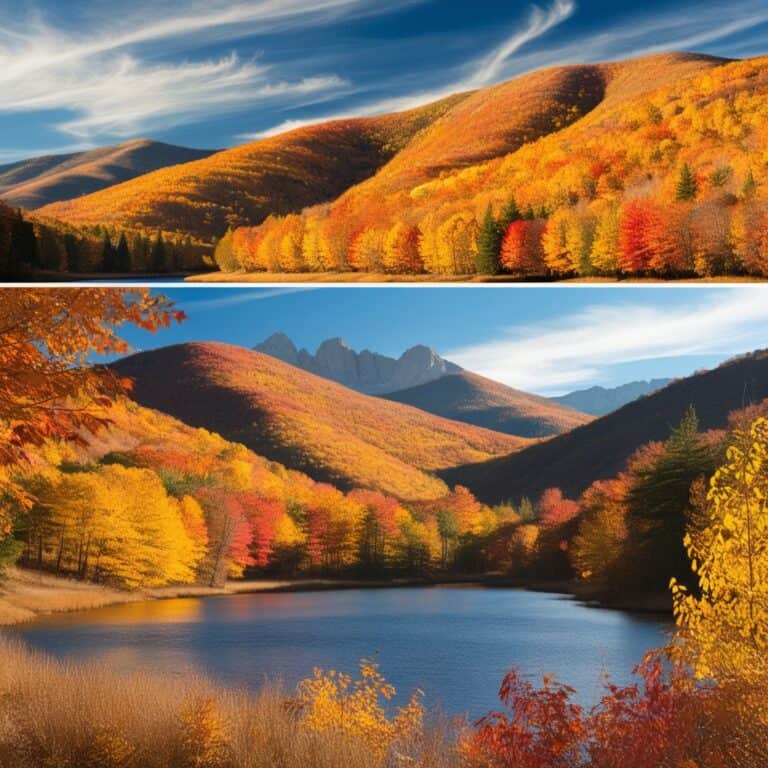Capturing Landscapes: Why Camera Settings Matter for Beginners
Landscape photography is an art form that lets us preserve the beauty of nature through our lenses. For beginners, understanding camera settings can feel overwhelming, but it’s the key to capturing professional-quality photos! Did you know that nearly 70% of stunning landscape shots rely on just a few basic settings? Like aperture for landscapes is typically between f/8 and f/16. Let me walk you through the must-know, best camera settings for landscape photography to transform your snapshots into masterpieces. Whether you’re chasing golden hour light or capturing towering mountains, this guide will help you start strong.
Why Understanding Camera Settings is Essential for Landscape Photography
Ah, camera settings – my old nemesis turned best friend. I’ll admit, when I first started dabbling in landscape photography, I relied on auto mode like a safety net. I thought, “The camera’s smart; it’ll figure it out for me.” Spoiler alert: it didn’t. My shots came out dull, overexposed, or flat. It wasn’t until I bit the bullet and started experimenting with manual settings that everything changed.
The Role of Settings in Achieving Sharp, Vibrant Images
The first time I truly nailed a sharp landscape shot was after understanding aperture and shutter speed. I remember standing on a cliffside at sunrise, determined to capture the glow spilling over the mountains. The first few shots? Blurry messes. Turns out, using a wide aperture like f/2.8 created such a shallow depth of field that the foreground and background weren’t in focus. Switching to f/11, paired with a tripod, transformed the scene into a tack-sharp masterpiece. That day, I learned that aperture controls more than light; it defines the story of your image.
Shutter speed is another game-changer. When I wanted to capture the silky flow of a waterfall, I used a slower shutter speed of around 1/4 second and a neutral density filter to avoid overexposure. The result? A dreamy, flowing effect that made my photo feel alive. These details matter, and you’ll notice the difference the moment you compare a shot taken in auto mode with one where you’ve tweaked the settings yourself.
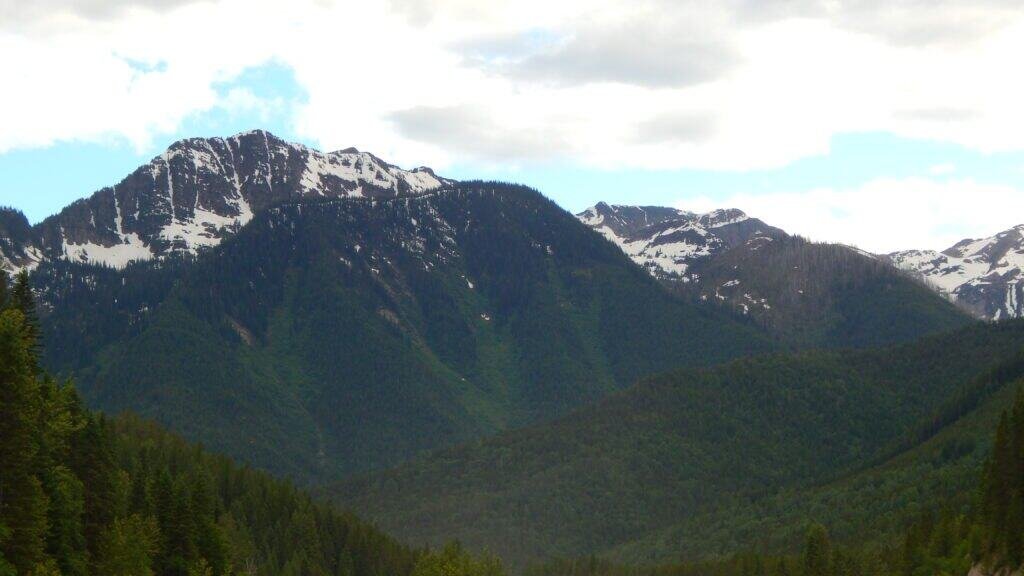
Importance of Mastering Manual Mode Versus Auto Settings
Auto mode is fine when you’re just starting, but it often guesses wrong in complex lighting. I’ve had moments where auto mode decided the sky was more important than the foreground, leaving my landscape underexposed. That’s when I realized manual mode isn’t as scary as it seems. Once I learned to balance ISO, aperture, and shutter speed, I started feeling like an artist painting with light. It’s like driving a stick-shift car, awkward at first but exhilarating once you get the hang of it. And yes, sometimes I still mess up, but those mistakes have taught me more than any YouTube tutorial ever could.
How the Right Settings Can Evoke Mood and Depth in Your Shots
Here’s the thing: settings aren’t just technical; they’re emotional. Want a moody, dramatic shot of a storm rolling in? Lower your ISO, narrow your aperture, and slow down that shutter speed to capture every ominous detail. On the flip side, if you’re chasing the golden hour glow, keep your ISO low for crispness and open up the aperture just a bit to let the warmth flood in.
I remember one evening shooting in the desert. The light was fading fast, and I wanted the sand dunes to look endless and surreal. I used a low ISO, f/16 for depth, and a long exposure of 30 seconds. The resulting image wasn’t just a photo; it felt like an emotion, a quiet, almost spiritual experience.
Mastering camera settings isn’t just about technical perfection; it’s about bringing your vision to life. You’ll stumble, sure, but each mistake gets you closer to understanding how to turn a simple scene into something extraordinary. Trust me, it’s worth every misstep.
Basic Camera Settings for Landscape Beginners
When I started shooting landscapes, the sheer number of camera settings felt overwhelming – like trying to read a map in a foreign language. But once I broke it down into aperture, shutter speed, and ISO, things finally started to click. These three settings are like a trio of musicians, and when they’re in harmony, you can create a masterpiece. Here’s how I learned to fine-tune each one and what I wish I’d known from the start.
Aperture: Choosing the Right F-Stop for Depth of Field
The first time I tried to shoot a sweeping mountain range, I used a wide aperture (f/4) because I thought more light was better. Big mistake. The peaks in the distance were blurry, and the foreground looked weirdly soft. Turns out, for landscapes, you usually want a narrower aperture – around f/8 to f/16 – to keep everything sharp from front to back.
Think of the aperture as the gatekeeper for depth of field. A smaller f-stop (like f/2.8) creates a shallow depth of field, which is great for portraits but not ideal for landscapes. Meanwhile, a larger f-stop (f/11 or higher) ensures the whole scene stays in focus. Of course, every rule has exceptions. If you’re focusing on a single subject, let’s say, a lone flower against a sunset, using a slightly wider aperture can create a beautiful, isolated effect.
Shutter Speed: Capturing Movement or Stillness Effectively
I’ll never forget my first attempt at photographing a flowing river. I thought, “Fast shutter speed means sharp pictures, right?” So I cranked it up to 1/1000 second. The result? The water looked frozen, like a chunk of glass, which wasn’t the serene vibe I was going for.
For that soft, dreamy look, a slower shutter speed, like 1/2 second or longer, is your go-to. The key is stability. Invest in a sturdy tripod, or you’ll end up with motion blur everywhere. On the flip side, if you’re shooting something like wind-swept grasses, a faster shutter speed (around 1/500 second) can freeze the action beautifully. Shutter speed isn’t just about light; it’s about storytelling.
ISO: Balancing Light Sensitivity for Optimal Results
Ah, ISO. It’s the sneaky little setting that can make or break your shot. When I first started, I had no idea what ISO did, so I left it cranked up high all the time. The result? My photos were grainy messes. Now I know that lower ISO values (like 100 or 200) are best for landscapes because they keep the image crisp and free of noise.
That said, sometimes you have to push ISO a little. If you’re shooting at dawn or dusk and don’t have enough light, bumping up to ISO 400 or 800 can save your shot without adding too much grain. Just don’t go overboard unless you’re after a gritty, vintage look – which, honestly, rarely works for landscapes.
These basic settings, aperture, shutter speed, and ISO, are the foundation of every great landscape photo. It’s all about balance. And trust me, once you understand how they work together, it’s like unlocking a secret code that turns ordinary scenes into breathtaking art. Just don’t be afraid to experiment; the best way to learn is by messing up (a lot).
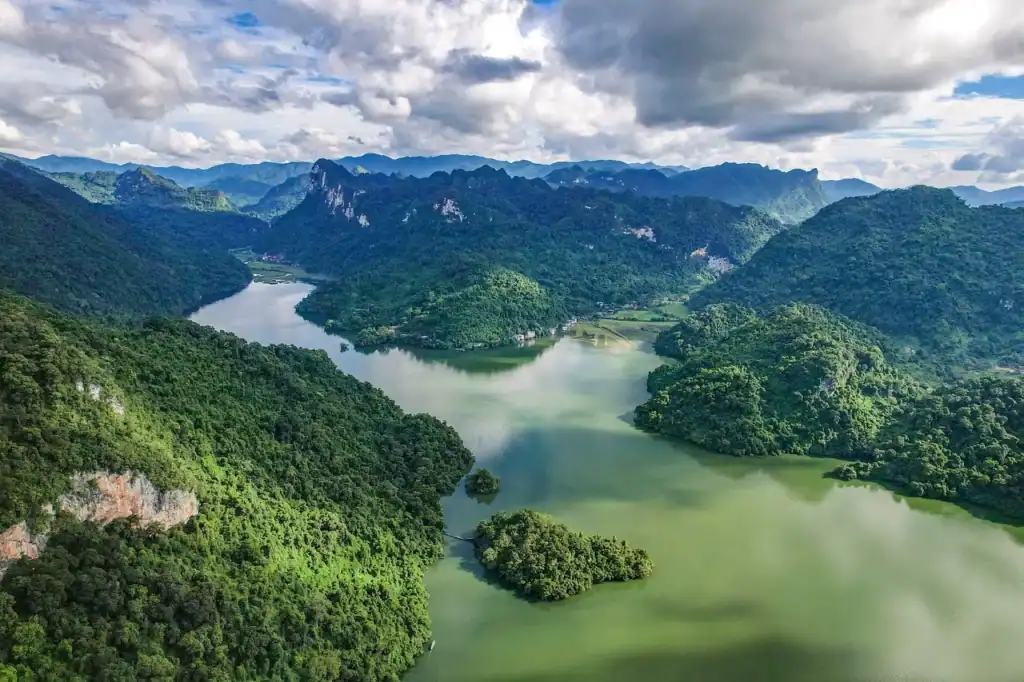
Advanced Tips for Perfecting Landscape Shots
Once you’ve got the basics of landscape photography down, the real fun begins. This is where you go from taking decent photos to creating images that make people say, “Wow.” For me, learning advanced techniques felt like uncovering secret hacks that made my photos stand out. Let’s dive into three of my favorites that have seriously upped my game.
Using the Rule of Thirds to Frame Your Composition
The rule of thirds is one of those tips that seems so simple that you almost overlook it. Early on, my landscapes always felt a little… off. Then, someone told me to imagine my frame divided into a 3×3 grid and to place key elements along those lines or at their intersections. Game changer.
For example, if I’m shooting a sunrise over a lake, I’ll align the horizon with the lower third of the frame, instead of centering it. It creates balance and draws the viewer’s eye into the photo. The same goes for placing focal points, like a tree, mountain peak, or even a person, in one of the intersections rather than dead center. It feels more natural, and honestly, it just looks better.
Smart tip: Many cameras, and even smartphones, have a grid overlay you can turn on. It’s a lifesaver when you’re framing your shot on the fly.
Leveraging Exposure Bracketing for Tricky Lighting Conditions
Let’s talk about lighting, aka the bane of my existence when I first started. You know those scenes where the sky is super bright, but the ground is in shadow? Yeah, they’re tough. That’s where exposure bracketing comes in.
With exposure bracketing, your camera takes three (or more) shots at different exposures – one darker, one lighter, and one in the middle. Later, you can combine them in editing software like Lightroom to create a perfectly balanced image. The first time I used this technique on a sunset, it was like magic. The sky kept its rich colors, and the foreground was finally visible without looking fake.
Pro tip: Use a tripod for bracketing. Even slight movements between shots can mess up the alignment when you merge them.
When and How to Use Filters (Polarizing, ND Filters)
Filters are like the secret sauce of landscape photography. The first filter I ever used was a polarizing filter, and let me tell you, it’s a game-changer for outdoor shots. It cuts through glare, deepens the blue of the sky, and makes colors pop. Just screw it onto your lens and rotate it until you see the effect you want.
Then, there are neutral density (ND) filters. These are a must if you’re shooting long exposures in bright light, like a waterfall at noon. An ND filter acts like sunglasses for your camera, letting you slow down the shutter speed without overexposing the shot. I remember using one to capture ocean waves on a sunny day, and the silky, dreamy effect was exactly what I’d envisioned.
One thing to note: Filters aren’t a cure-all. They work best when used intentionally. For example, a polarizer can darken skies too much if you’re not careful, and stacking filters can sometimes cause vignetting. But when used correctly, they’re worth every penny.
Mastering these advanced techniques will transform your landscape photography. Each tip adds a layer of polish and professionalism, turning good shots into unforgettable ones. The best part? These are just the beginning – there’s always more to learn, which is what makes landscape photography so addicting.
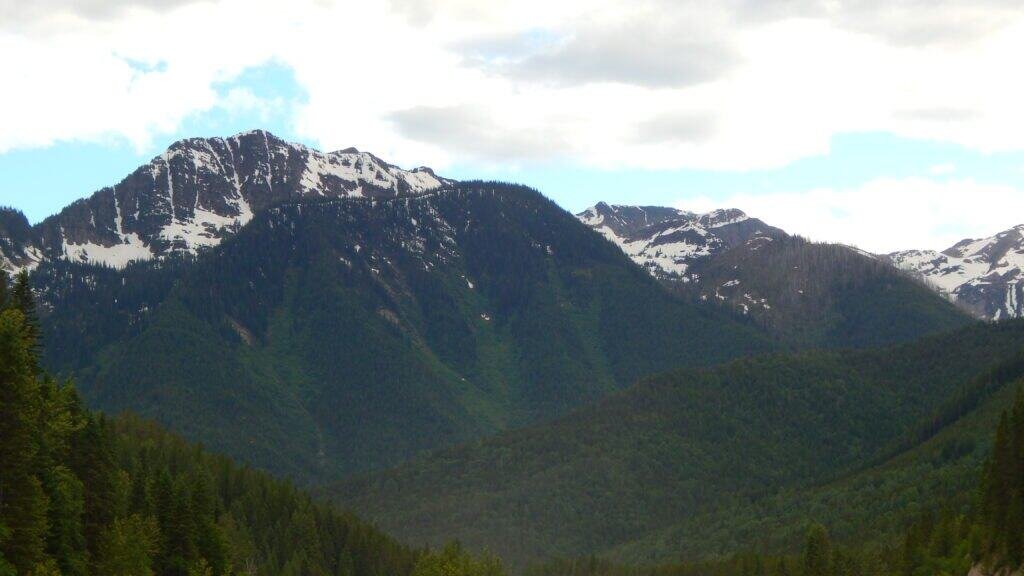
Recommended Equipment for Landscape Photography
When it comes to landscape photography, having the right gear can make all the difference. You don’t need to go broke buying top-of-the-line equipment, but investing in a few essentials will set you up for success. I’ve learned this the hard way, lugging around heavy, unnecessary gear or missing the shot because I didn’t have the right tools. Here’s a breakdown of the must-haves for anyone serious about capturing stunning landscapes.
Cameras Suited for Beginners (DSLRs and Mirrorless Options)
If you’re just starting out, don’t stress about having the latest and greatest camera. My first landscape camera was a trusty DSLR, the Canon EOS Rebel series, which offered a solid mix of manual controls and affordability. For beginners, a DSLR like the Canon Rebel T7 or a mirrorless option like the Sony Alpha a6100 is a fantastic place to start.
Mirrorless cameras are a newer favorite of mine because they’re lightweight and pack advanced features, like live exposure previews. The Sony Alpha series, Fujifilm X-T30, or Nikon Z50 are great beginner-friendly options. They may cost a bit more upfront than some DSLRs, but their compact design makes a difference when you’re hiking for miles to find the perfect spot.
Remember: it’s not the camera that makes the photo; it’s how you use it. Mastering your settings and composition will have a far greater impact than splurging on a high-end model.
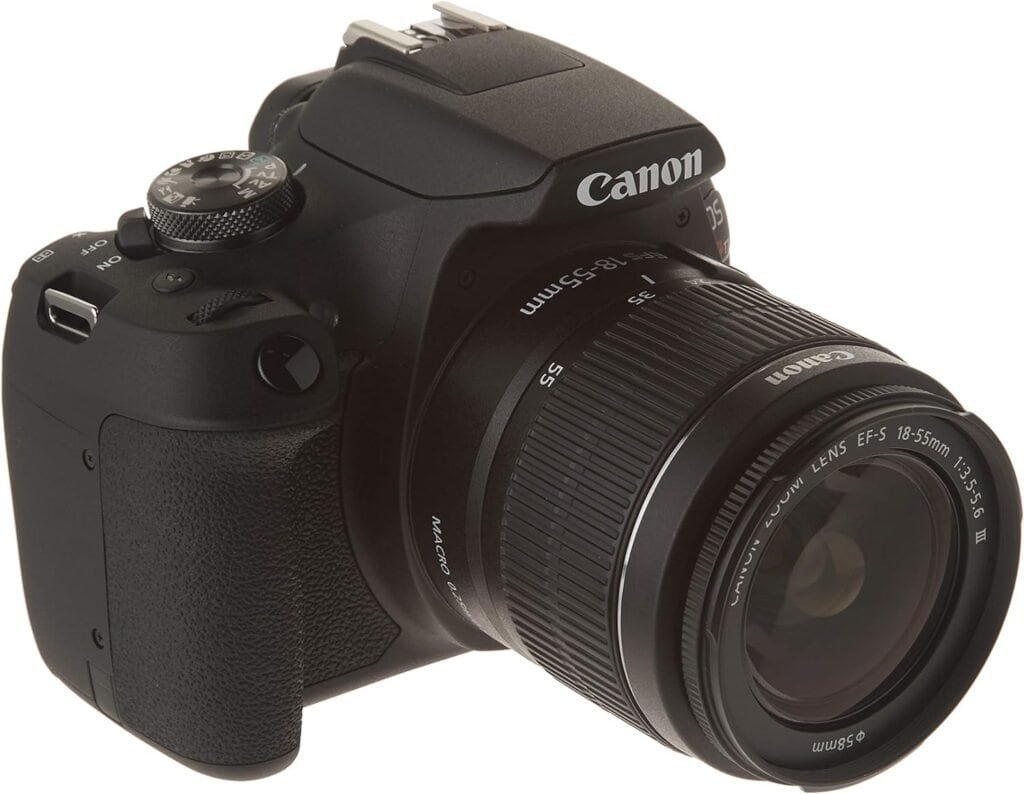
Essential Lenses for Wide-Angle and Zoom Versatility
Lenses matter. Big time. For landscapes, a good wide-angle lens is non-negotiable. It’s perfect for capturing sweeping vistas, towering mountains, or dramatic skies. My go-to for wide shots is an 18-55mm kit lens, but if you’re ready to upgrade, look at lenses like the Canon EF-S 10-18mm or the Sigma 16mm f/1.4 for Sony mirrorless cameras.
Zoom lenses, on the other hand, come in clutch for capturing distant details, like a lone tree on a hillside or wildlife in the distance. A 70-200mm lens is ideal, though even a more affordable 55-250mm can get the job done. I once missed an incredible shot of an eagle perched on a rock because I only had my wide-angle lens. Lesson learned, always carry both if you can.
If you’re on a budget, consider third-party lenses like Tamron or Sigma. They offer excellent quality at a fraction of the price.
Check out our article on Camera Lenses.
Tripods for Stability in Long-Exposure Shots
Ah, the humble tripod. I used to think it was an unnecessary piece of gear until I started dabbling in long exposures. Trying to shoot silky waterfalls or star trails without a tripod is like trying to eat soup with a fork. It just doesn’t work.
For beginners, look for a tripod that’s lightweight yet sturdy. The Manfrotto Compact Action or the Vanguard Alta Pro 2 are great options. If you’re hiking, a carbon fiber tripod like the Peak Design Travel Tripod is worth considering, though it’s pricier.
Pro tip: Get a tripod with a ball head. It allows you to adjust angles quickly and easily, which is a lifesaver when the light is changing fast.
Having the right equipment doesn’t mean you’ll automatically take amazing photos, but it does make the process smoother and more enjoyable. Start with what you can afford, and upgrade as you grow. And remember, the best gear is the gear you have with you, so don’t overthink it. Just get out there and shoot!
Common Mistakes Beginners Make and How to Avoid Them
Every landscape photographer, no matter how experienced, has made their fair share of mistakes. Trust me, I’ve had plenty of cringe-worthy moments where I thought I nailed a shot only to realize I’d messed up big time. The good news? Each mistake is a learning opportunity. Here are three common missteps I’ve seen (and committed!) and how you can steer clear of them.
Overlooking Focus and Sharpness in Key Areas
One of my first big mistakes was trusting my camera’s autofocus completely. I’d snap what I thought was a killer mountain shot, only to review it later and realize the foreground was sharp, but the peaks were a blurry mess. The problem? I wasn’t paying attention to where my focus point was.
To avoid this, use manual focus or your camera’s single-point autofocus mode. For landscapes, focus about one-third into the frame to maximize sharpness, especially when using a smaller aperture like f/11. And don’t forget to zoom in on your preview screen to double-check focus before packing up.
A tripod can also help eliminate motion blur, especially in low light or long exposures. It’s a small step that saves you from the heartbreak of blurry photos.
Ignoring Weather Conditions and Lighting Changes
Weather is both a photographer’s best friend and worst enemy. I’ve lost count of how many times I’ve shown up to a location unprepared, only to be blindsided by rain, wind, or completely flat light. There was one trip to a beach where I didn’t check the tide chart and ended up soaked while scrambling to save my gear.
Always plan ahead. Use apps like PhotoPills or The Photographer’s Ephemeris to track the golden hour, blue hour, and weather conditions. Cloudy skies can create dramatic, moody scenes, while harsh midday sun often washes out colors. Don’t be afraid to adapt; sometimes, the best shots come when you embrace the unexpected.
Quick tip: Bring a lens cloth. Weather changes can fog up your lens or leave smudges, and there’s nothing worse than realizing your “perfect shot” has water spots all over it.
Overediting in Post-Processing: Striking a Balance
Editing can turn a good photo into a great one – or a natural scene into something that looks like it belongs in a video game. Early on, I went heavy on saturation and clarity sliders, thinking it made my photos “pop.” Looking back, they just look… fake.
The goal of editing should be to enhance what’s already there, not to create something unrealistic. Use tools like Adobe Lightroom to adjust highlights, shadows, and contrast subtly. Start with small tweaks and build up gradually. One trick I learned: take a break after editing, then come back later with fresh eyes. It’s amazing how different an image can look after you’ve stepped away for a bit.
Also, don’t ignore your white balance. It’s easy to overlook, but getting it right can make or break your shot’s mood. Warmer tones work well for sunrises and sunsets, while cooler tones can emphasize misty or snowy scenes.
Mistakes are part of the process, and they’re going to happen. What matters is learning from them and improving with every shot. Focus carefully, respect the weather, and approach editing with a light touch. Your photos and your confidence will thank you.
Post-Processing Tips to Enhance Your Landscape Photos
Post-processing is where your landscape photos can truly come to life. It’s not about faking the scene but rather enhancing what’s already there. Think of it like adding a pinch of salt to a dish, it’s all about balance. I’ve had my fair share of editing missteps (oversaturating a sunset so much it looked radioactive, for example), but with practice, I’ve learned how to keep things natural while making my photos shine.
Adjusting Brightness, Contrast, and Saturation Naturally
The first step in editing any landscape photo is balancing the basics. Start by adjusting the brightness and contrast to bring out the details in your image. I usually lift the shadows slightly to recover dark areas without losing the depth, then bring down the highlights to retain sky details. This is especially helpful for high-contrast scenes like sunrises or sunsets.
Saturation and vibrance are where many beginners go overboard (guilty as charged). Instead of cranking up the saturation, try increasing vibrance – it enhances muted colors without blowing out the already vivid ones. For example, it’s great for making a blue sky pop without turning your green trees into neon beacons. A little goes a long way, so adjust incrementally.
Using Software Like Lightroom for Efficient Editing
Lightroom has been my go-to editing software for years. It’s intuitive, powerful, and built for photographers. What I love most is its non-destructive editing workflow – you can experiment freely without worrying about ruining your original file.
To speed up your editing, learn to use presets. Lightroom offers built-in options, but creating your own is even better. I have a few custom presets for specific conditions, like golden hour shots or overcast skies. They’re a time-saver and provide a consistent look across your portfolio.
The graduated filter and radial filter tools are lifesavers for landscapes. For instance, if your sky is too bright compared to the foreground, use a graduated filter to darken it subtly. It mimics the effect of a physical ND grad filter but gives you more control.
How to Sharpen and Reduce Noise for a Polished Finish
Nothing ruins a great photo faster than noise and lack of sharpness. If you’re shooting in low light or using a high ISO, noise can creep in, making your image look grainy. Lightroom’s noise reduction tool is excellent for smoothing out these imperfections, but don’t go overboard – you still want to maintain texture and detail.
Sharpening is where I used to mess up a lot. Too much, and the image looks artificial; too little, and it lacks punch. A good rule of thumb is to zoom in to 100% and adjust the sharpening slider while keeping an eye on edges. For landscapes, focus on sharpening details like rocks, trees, and architectural features while keeping skies and water smooth.
Pro tip: Always edit on a calibrated monitor. Colors can look wildly different across devices, and you want to ensure your edits translate well to prints or screens.
Post-processing doesn’t need to be intimidating. Start simple: adjust the basics, refine details, and gradually explore more advanced tools. And remember, less is often more. Let the natural beauty of your landscape shine, and your edits will feel like an extension of the scene, not a reimagining of it.
Bringing It All Together: Your Journey to Stunning Landscape Photography
Mastering the best camera settings for landscape photography beginners is a journey, but it’s incredibly rewarding! By focusing on aperture, shutter speed, and ISO, you can create stunning images that bring nature to life. Remember, practice makes perfect – so get out there and explore! Don’t forget to share your newfound skills with friends or on social media to inspire others. Let your passion for landscapes shine through every shot!
FAQ Section
What is the best aperture for landscape photography?
The best aperture for landscapes is typically between f/8 and f/16. These settings provide a large depth of field, ensuring both foreground and background elements are sharp.
What type of lens is best for landscape photography?
Wide-angle lenses are ideal for landscapes because they capture more of the scene and create a sense of depth. Popular choices include lenses with focal lengths between 10mm and 35mm.
Should I shoot in RAW or JPEG for landscape photos?
Shooting in RAW is highly recommended for landscapes. RAW files capture more data, allowing for greater flexibility in post-processing, such as adjusting exposure and colors without losing quality.
How can I avoid blurry photos when shooting landscapes?
To avoid blurriness, use a tripod to stabilize your camera, especially in low-light situations or when using slow shutter speeds. Additionally, ensure your focus point is on a key area of the scene.
Is it necessary to use filters for landscape photography?
While not mandatory, filters like polarizers and neutral density (ND) filters can significantly enhance your shots. Polarizers reduce glare and boost color saturation, while ND filters allow for long exposures in bright conditions.
Disclaimer: This blog post contains affiliate links

